
Level Up Your Fitness: Choose a Workout Program Designed for Your Goals
A fitness journey can be much more effective and rewarding when the program is designed with a specific goal in mind. Goal-specific workout programs are crafted to deliver targeted results, enhance motivation, and minimize the risk of burnout or injury.
By focusing on an individual goal, whether it’s weight loss, muscle gain, endurance, flexibility, or overall health, each program can harness precise training techniques and exercise selection to help you progress efficiently. Here, we’ll break down some of the most popular fitness goals and explore customized workout programs tailored to each, making it easy for you to choose the right path for your fitness journey.
Weight Loss-Focused Workout Programs
For weight loss, workout programs typically center around high-intensity activities that maximize calorie burn while promoting fat loss and muscle toning. Research has shown that combining cardiovascular training with resistance exercises can help reduce body fat while preserving muscle mass. These programs usually incorporate cardio, high-intensity interval training (HIIT), and circuit training to keep the heart rate elevated.
Sample Weight Loss Program:
- Cardio Workouts: Begin with moderate cardio sessions, like a 30-minute brisk walk or light jog, 3–4 times per week. Increase the intensity gradually by incorporating intervals of higher intensity.
- HIIT Workouts: HIIT is highly effective for fat burn; aim for 2–3 weekly sessions. Try exercises like jump squats, burpees, and mountain climbers in short bursts of 20–30 seconds with 10–15 seconds of rest in between.
- Circuit Training: Engage in circuit training 2–3 times per week, alternating exercises like lunges, push-ups, and kettlebell swings in a fast-paced sequence.
Staying consistent is essential in a weight loss-focused program. Tracking progress through metrics like body measurements, photos, or weight can help maintain motivation and adjust the program as needed.
Strength Training Programs for Muscle Building
Muscle-building or hypertrophy programs are typically designed with progressive overload to stimulate muscle growth. These programs often focus on lifting heavy weights, targeting specific muscle groups, and employing compound movements. A well-rounded strength program also incorporates progression strategies, encouraging you to increase weight or reps gradually.
Sample Muscle Building Program:
- Compound Exercises: Aim for big movements like squats, deadlifts, bench presses, and overhead presses that target multiple muscle groups. These should form the core of your program.
- Isolation Exercises: Incorporate exercises targeting specific muscles, like bicep curls, tricep extensions, or calf raises, after your compound lifts to maximize growth.
- Repetition Scheme: For hypertrophy, aim for 3–4 sets of 8–12 reps. Gradually increase weights to keep challenging your muscles.
- Frequency: Train major muscle groups at least twice a week (e.g., upper and lower body splits or push-pull-legs splits) for optimal growth.
For continued progress, it’s essential to monitor the weights and reps closely and adjust the program based on performance and recovery rates. Many programs are designed with “deload” weeks or cycles to help avoid overtraining and promote sustainable growth.
Endurance and Stamina-Building Programs

Endurance-focused programs emphasize cardiovascular health and stamina, essential for activities like long-distance running, cycling, or any sport requiring prolonged effort. The foundation of these programs is aerobic training with progressively challenging workouts to improve lung capacity and muscular endurance.
Want To Get Leaner and Stronger with Bodyweight Workouts? Do This Now!
Sample Endurance Program:
- Cardio Sessions: Include 4–5 cardio workouts per week, starting with moderate-intensity sessions of 30–45 minutes.
- Interval Training: Intervals (e.g., 1 minute of hard effort followed by 2 minutes of recovery) once or twice a week improve speed and stamina over time.
- Longer Duration Workouts: Gradually increase the duration of a weekly “long” workout, whether it’s running, biking, or rowing. Aim to add 5–10% time or distance each week.
- Cross-Training: Add low-impact activities, like swimming or rowing, to enhance endurance while reducing the risk of overuse injuries.
Tracking metrics like heart rate, speed, and distance over time can help refine your endurance program and celebrate progress as you work toward higher stamina.
Flexibility and Mobility Programs
Flexibility and mobility routines are essential for reducing injury risk and promoting better movement patterns. This type of program can complement any primary goal, whether it’s strength, weight loss, or endurance, and is designed to enhance joint health, posture, and body alignment.
Sample Flexibility and Mobility Program:
- Yoga or Pilates: Practicing yoga or Pilates 2–3 times per week promotes full-body flexibility and core stability.
- Dynamic Stretching: Perform 5–10 minutes of dynamic stretching before workouts, focusing on areas that will be targeted, like leg swings or torso twists.
- Static Stretching and Foam Rolling: After workouts, stretch all major muscle groups and incorporate foam rolling to reduce muscle tension and improve recovery.
A consistent mobility and flexibility routine can lead to improved posture, range of motion, and enhanced balance. Consider tracking improvements in flexibility by measuring range of motion or comfort level in various stretches.
Balanced Fitness Programs for Overall Health
For those looking to improve general health, a balanced program that includes a mix of strength, cardio, and flexibility training is ideal. These programs offer versatility and support well-rounded fitness, helping to boost energy, maintain healthy body weight, and build functional strength.
Sample Balanced Program:
- Strength Training: Include 2–3 days of strength training, alternating between upper and lower body exercises.
- Cardio: Engage in moderate cardio activities like jogging, cycling, or swimming 2–3 times a week.
- Flexibility and Mobility: Incorporate flexibility exercises, like yoga, once or twice a week to improve movement quality.
- Rest Days: Take at least one rest day per week and consider low-intensity activities like walking or stretching on active recovery days.
For general health, the goal is to establish a routine that is sustainable, enjoyable, and supportive of an active lifestyle. This type of program is highly adaptable and can be customized based on individual fitness levels and preferences.
Here Is a Comprehensive List of GYMS in Abuja for Your Fitness Goals
Top Gyms in Abuja for the Best Workout Programs Designed for Your Goals
Whether you’re looking to lose weight, build strength, or enhance your overall fitness, Abuja has some fantastic gyms with programs tailored to help you achieve your goals. Here’s a list of some of the best gyms in Abuja that offer top-notch facilities, experienced trainers, and customized programs:
1. Best Body Gym
📍 470 Aminu Kano Cres, AMAC, Abuja 900288
📞 08032118560
Best Body Gym focuses on creating personalized workout plans based on your fitness goals. With professional trainers and a fully equipped facility, it’s perfect for both beginners and fitness enthusiasts looking to stay motivated and achieve results.
2. Deglowing Stars Executive Gym
📍 Garima Plaza, Shop 25 & 26, Arab Road Kubwa, Abuja 901101
📞 09163297788
This gym in the heart of Kubwa offers a variety of workout programs designed for those seeking to boost their fitness journey. With a welcoming atmosphere and experienced trainers, Deglowing Stars Executive Gym helps you stay on track and keeps fitness fun and engaging.
3. Ecofitness Hub
📍 160 4th Ave, Gwarinpa, Abuja 900108
📞 07039921460
Ecofitness Hub is known for its holistic approach to fitness and wellness, offering a range of programs from strength training to yoga. Their certified trainers provide personalized coaching, making it an ideal place for individuals at any fitness level.
4. ALTIARED LIFESTYLE
📍 KLH 160 Kapwa, Phase 1 FHA LUGBE, Off Airport Road
📞 08028589003
ALTIARED LIFESTYLE goes beyond just fitness, integrating healthy lifestyle habits and fitness programs into your routine. This gym is perfect for those in the Lugbe area looking to stay fit and energized with tailored workouts and wellness tips.
5. Amaryadotcom Spa and Gym
📍 8 Anambra Cres, Off Nile Street, Maitama, Abuja 900271
📞 07047460000
For a gym and spa experience combined, Amaryadotcom is an excellent choice. Located in Maitama, it offers fitness programs alongside relaxing spa treatments. With its personalized workout plans, you can rejuvenate both body and mind in one place.
Frequently Asked Questions
- How often should I change my workout program?
- It’s generally recommended to change your workout program every 4–6 weeks to prevent adaptation and keep progressing. However, if you are seeing consistent progress, sticking to the same program for a longer period can also be beneficial.
- Can I combine goals like weight loss and muscle gain?
- Yes, you can combine goals by designing a program that includes strength training, cardio, and a balanced diet. However, it may take longer to achieve results in both areas simultaneously.
- How do I know if a program is effective?
- Track metrics related to your goals, like weight, strength, endurance, or measurements. Progress in these areas over time generally indicates an effective program.
Conclusion
Goal-specific workout programs provide a structured pathway to success, helping you achieve fitness milestones while staying motivated and reducing the risk of injury. Whether your goal is to lose weight, build muscle, improve endurance, enhance flexibility, or maintain overall health, a customized program can accelerate your progress and create a sustainable, enjoyable fitness routine. Select a program aligned with your goals, commit to consistency, and adjust based on your body’s feedback to make the most of your workouts.
